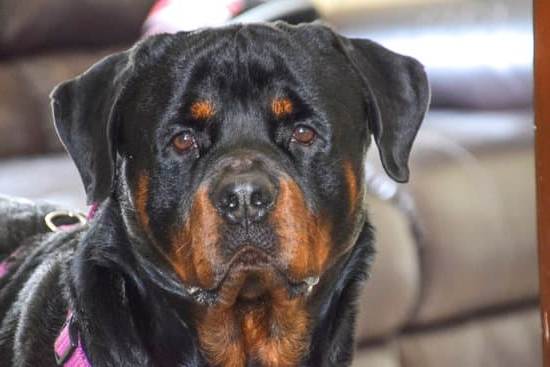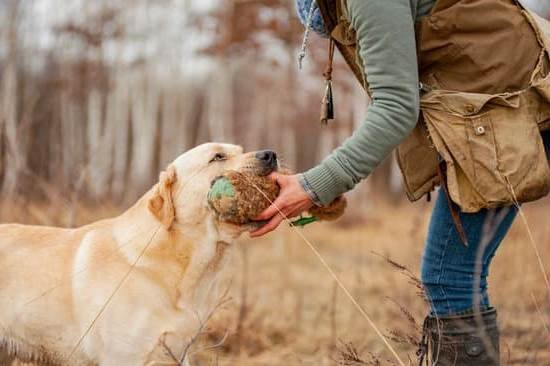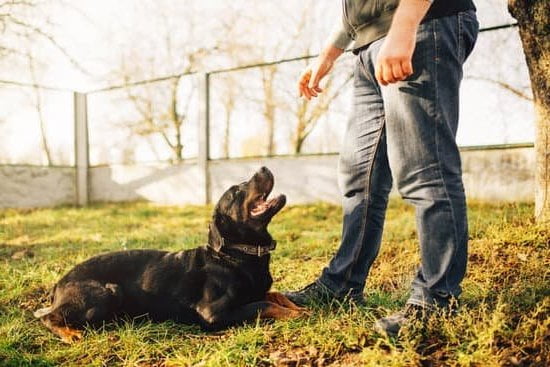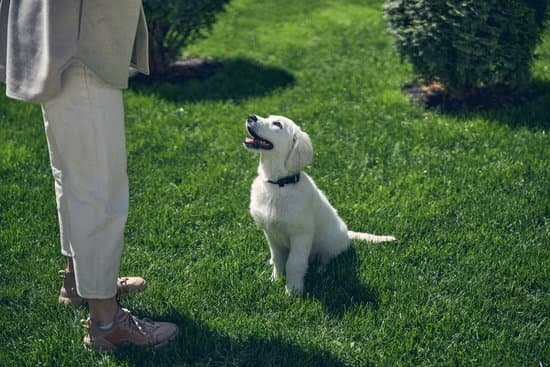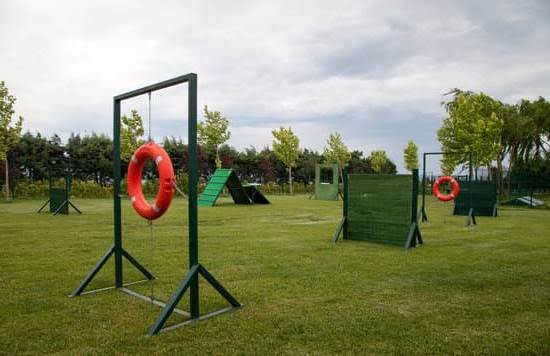When is a dog fully potty trained? Potty training is a crucial aspect of owning a dog that can greatly impact the relationship between the pet and its owner. It not only ensures a clean and hygienic living environment but also promotes bonding and trust between the two. From early signs to age milestones, understanding the potty training process is essential for a smooth transition to a well-behaved canine companion.
Potty training starts with recognizing early signs that indicate when a dog is ready to begin the process. Whether it’s sniffing around, circling in a specific spot, or whining at certain times, paying attention to these cues can make the training process more effective. As owners, being attuned to our pets’ behaviors is key in establishing successful communication and addressing their needs promptly.
The learning process of potty training involves methods like crate training, positive reinforcement, and consistency. It’s important to establish a routine, offer rewards for good behavior, and maintain patience throughout the process. By guiding our dogs with encouragement and creating clear boundaries, we can help them understand where and when it’s appropriate to relieve themselves. Through dedication and understanding, achieving a fully potty-trained dog is an achievable milestone that strengthens the bond between owner and pet.
Early Potty Training Signs
Potty training is an essential part of having a well-behaved and happy dog. Understanding the early signs that indicate when a dog is ready to be potty trained can set the stage for successful training and a stronger bond between you and your furry friend.
One of the first signs to look out for is when your dog starts sniffing around or circling in a specific spot, which usually means they are getting ready to eliminate. Additionally, if you notice your dog whining or becoming restless, it might be a sign that they need to go outside.
It’s crucial to pay attention to these early potty training signs as they indicate that your dog is starting to recognize their own bodily cues and signals. By being observant and proactive in responding to these signs, you can help your dog understand where and when it’s appropriate to potty. This understanding lays the foundation for effective potty training techniques and sets the stage for a positive learning experience for both you and your pup.
While every dog is unique in their learning process, identifying these early potty training signs can help streamline the training journey. Remember that patience, consistency, and positive reinforcement are key elements in successfully potty training your dog. By setting them up for success from the start by recognizing these early signs, you’re taking an important step towards achieving a fully potty-trained companion who enhances your life with joy and companionship.
Learning Process
Potty training is a crucial aspect of building a strong and healthy relationship between a dog and its owner. It not only ensures a clean living environment but also establishes clear communication and boundaries for the dog. Understanding the learning process involved in potty training can make the journey smoother and more effective for both the pet parent and the furry companion.
To embark on the potty training journey, it is important to start with crate training. Using a crate can help create a den-like environment for the dog, where they are less likely to have accidents as dogs naturally avoid soiling their sleeping area. When introducing the crate, make sure it is spacious enough for the dog to stand up, turn around, and lie down comfortably. Gradually increase the time spent in the crate while supervising closely.
Positive reinforcement plays a significant role in potty training success. Whenever your dog displays appropriate potty behavior, such as going outside or using a designated potty area, praise them immediately with treats, verbal cues, or petting. Consistency is key in reinforcing good behavior – make sure to use the same cues and rewards each time. By pairing positive experiences with desired actions, your dog will learn faster and be more motivated to repeat those behaviors.
- Start with crate training to establish a den-like environment.
- Use positive reinforcement techniques like treats or verbal praise.
- Consistency in establishing routines and rewards is crucial.
Age Milestones
Potty training a dog is an essential part of integrating them into your home and establishing a healthy relationship between you and your furry companion. It not only ensures a clean living environment but also contributes to the well-being and comfort of your pet. Understanding the age milestones when a dog should start showing progress in potty training is crucial for pet owners to set realistic expectations and track their furry friend’s development.
Puppyhood
During puppyhood, which typically ranges from 8 weeks to 6 months of age, dogs are like sponges, absorbing information and learning new behaviors quickly. This stage is considered critical for potty training, as puppies have smaller bladders and higher frequency needs compared to adult dogs. It’s important to start the potty training process early in this stage to establish good habits and prevent accidents in the future.
Adolescence
As dogs enter adolescence, around 6 to 18 months of age, they may start testing boundaries and exhibiting rebellious behavior. This period can pose challenges in potty training, as some dogs may become less consistent or more easily distracted. It’s crucial for dog owners to stay patient, maintain consistency in training methods, and provide positive reinforcement during this stage to reinforce good habits.
Adulthood
By the time a dog reaches adulthood, typically around 1 year of age for small breeds and up to 2 years for larger breeds, they should have significantly improved their potty training skills. Adult dogs have better bladder control and can hold their bathroom needs for longer periods.
At this stage, dogs should demonstrate a good understanding of where to potty, signal when they need to go outside, and have minimal accidents indoors. However, it is important for pet owners to continue reinforcing good behavior even when a dog is fully potty trained.
Regression
Changes in Routine
Dogs thrive on routine and when their daily schedule is disrupted, it can lead to regression in potty training. Changes like a new work schedule, different feeding times, or disruptions in the household can cause confusion for your dog. They may not be able to hold their bladder as long or may forget where they are supposed to go potty. It’s important to try and maintain consistency as much as possible to avoid setbacks in their progress.
Environmental Changes
Moving to a new house, going on vacation, or even rearranging furniture can impact a dog’s potty training. The familiar scents and cues they relied upon may no longer be present, leading them to have accidents indoors.
Additionally, if there are other pets or animals in the new environment, it may add stress for your dog and affect their ability to focus on potty training. Gradually acclimating them to the new surroundings and reinforcing their training can help prevent regression.
Tackling Regression
To address regression in potty training, it’s essential to go back to basics. Revisit crate training if necessary, supervise them closely indoors, and provide more frequent potty breaks. Make sure to praise and reward good behavior consistently so they understand what is expected of them.
Patience is key during this time as dogs may take some time adjusting back to their routine and environment changes. By being proactive and staying patient, you can help your dog overcome regression and get back on track with their potty training progress.
Positive Reinforcement Techniques
In addition to treats, verbal praise and affection can also be powerful tools for positive reinforcement during potty training. Dogs respond well to their owner’s approval and attention, so lavishing them with praise when they exhibit good potty behavior can go a long way in solidifying that behavior. This can include enthusiastic “good boy/girl.” statements, pets or belly rubs, and even a playful tone of voice.
Consistency in using positive reinforcement techniques is key when potty training a dog. It is important to immediately reward the dog after it goes potty in the right place so that it can make the association between the behavior and the reward.
Over time, this consistent positive reinforcement will help reinforce the habit of going potty in the appropriate location. By incorporating treats, verbal praise, and affection into your training routine, you can effectively encourage and reward good potty behavior in your dog.
| Positive Reinforcement Techniques | Examples |
|---|---|
| Treats | Offering small treats immediately after successful potty breaks. |
| Verbal Praise | Lavishing dogs with enthusiastic “good boy/girl.” statements and encouraging words. |
| Affection | Giving pets, belly rubs, or playful interaction as rewards for good potty behavior. |
Consistency Is Key
Consistency is a fundamental aspect of successful potty training for dogs. By establishing a routine, providing frequent potty breaks, and maintaining supervision, dog owners can effectively reinforce good potty behavior in their furry companions. Consistent training not only speeds up the process but also helps in preventing regression in potty training progress. Here are some key points to keep in mind when focusing on consistency in your dog’s potty training:
- Establishing a Routine: Dogs thrive on routine and predictability. Set specific times for feeding, playtime, and potty breaks to help your dog anticipate when they should go outside. Consistency in schedule will make it easier for your dog to understand when it’s time to eliminate.
- Frequent Potty Breaks: Especially during the initial stages of potty training, dogs may need more frequent trips outside to relieve themselves. Aim for regular potty breaks throughout the day, including after meals, playtime, or naps. This will give your dog ample opportunities to go outside and reduce accidents indoors.
- Supervision: Keeping a close eye on your dog is crucial during the potty training process. Supervision allows you to catch any signs that your dog needs to go outside and redirect them appropriately. Whether through direct observation or using tools like baby gates or crates, maintaining supervision helps prevent accidents and reinforces good behavior.
By emphasizing consistency in these areas, you can effectively support your dog’s progress towards becoming fully potty trained. Remember that every dog is different, so be patient and understanding throughout the training process.
Final Milestone
When is a dog fully potty trained varies depending on several factors, such as the dog’s age, breed, and individual temperament. However, there are common signs that indicate a dog has reached the final milestone of being fully potty trained.
One of the key indicators is when a dog goes for several weeks without having any accidents inside the house. This shows that the dog has developed better bladder control and understands where it should be going to relieve itself.
Another significant sign that a dog is fully potty trained is when they start signaling to go outside when they need to use the bathroom. This could be through barking at the door, scratching at it, or even bringing their leash or going to the designated potty area on their own. When a dog demonstrates this behavior consistently, it shows that they have made the connection between going outside and using the bathroom.
Furthermore, a clear understanding of where to potty is another crucial sign of full potty training in dogs. Whether it’s going to a specific spot in the yard or waiting by the door to be let out, when a dog consistently exhibits this behavior, it indicates that they have grasped the concept of appropriate bathroom etiquette.
Overall, when these three signs align – no accidents for weeks, signaling to go outside when needed, and understanding where to potty – it can be concluded that a dog is fully potty trained.
| Key Signs That Indicate Full Potty Training | Description |
|---|---|
| No Accidents for Weeks | Demonstrates improved bladder control and awareness of where to relieve itself. |
| Signaling to Go Outside | Indicates communication skills and understanding of bathroom needs. |
| Demonstrated Understanding of Where to Potty | Shows clear comprehension of appropriate bathroom locations. |
Conclusion
Potty training is a crucial aspect of owning a dog and plays a significant role in the overall relationship between a pet and its owner. By establishing good potty habits early on, both the dog and the owner can enjoy a harmonious and stress-free coexistence. Understanding the signs that indicate a dog is ready for potty training, implementing positive reinforcement techniques, and maintaining consistency throughout the process are key factors in successfully potty training a furry friend.
As we navigate through the stages of potty training our canine companions, it is important to keep in mind that every dog is unique and may progress at their own pace. From early signs like sniffing or circling to age milestones where potty behavior starts to solidify, each dog will present different learning curves. It is crucial for owners to remain patient, dedicated, and consistent during this process to ensure that their furry friends understand what is expected of them.
So, when is a dog fully potty trained? The final milestone comes when there have been no accidents for an extended period, the dog signals to go outside when needed, and demonstrates understanding of where to do their business.
However, even after achieving this goal, it is essential for owners to maintain routines, provide ample opportunities for bathroom breaks, and continue with positive reinforcement practices to secure long-term success. Remember, maintaining good habits throughout your dog’s life will not only benefit your household but also strengthen your bond with your four-legged companion.
Frequently Asked Questions
How Do You Know When a Dog Is Fully Potty Trained?
You can tell a dog is fully potty trained when they consistently go to the designated area to eliminate without accidents. Signs include signaling when they need to go out or holding it until taken outside.
At What Age Do Most Dogs Become Fully Potty Trained?
Most dogs become fully potty trained between 4 to 6 months of age, depending on breed, size, and individual factors. Small breeds may take longer compared to larger breeds due to their bladder size.
What Is the Hardest Dog to Potty Train?
The hardest dog breeds to potty train are typically those known for being stubborn or independent, like Dachshunds, Chow Chows, and Shiba Inus. These breeds may require extra patience and consistency during the training process.

Welcome to the blog! I am a professional dog trainer and have been working with dogs for many years. In this blog, I will be discussing various topics related to dog training, including tips, tricks, and advice. I hope you find this information helpful and informative. Thanks for reading!

